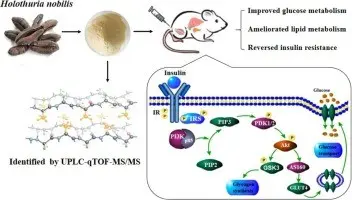A fatty diet is rightly associated with the risk of developing type 2 diabetes as it increases the risk of obesity. It turns out, however, that a group of fats can potentially help in the treatment of diabetics, according to a study by scientists in California.
According to the EurekAlert website, they showed that the so-called hydroxy fatty acid esters (FAHFAs) improve glucose metabolism in mice exposed to type 2 diabetes.
Scientists under the supervision of Dr. Alana Saghateliana from the Salk Institute for Biological Studies in La Jolla (California) conducted experiments on a special strain of mice that, despite obesity, did not have glucose metabolism disorders.
Obesity is associated in mice (and often also in humans) with the appearance of the so-called insulin resistance. It involves a decrease in the sensitivity of tissues – especially muscles, liver and adipose tissue – to insulin. As a result, the tissues take up less glucose and the blood glucose level increases dangerously. The emergence of insulin resistance precedes the development of type 2 diabetes and is its characteristic feature.
Recent studies have shown that rodents who, despite obesity, have not developed insulin resistance, have much higher than usual blood levels of the so-called branched hydroxy fatty acid esters (abbreviated FAHFA). The content of these compounds in the adipose tissue of mice was 16-18 times higher.
When the researchers added FAHFA to the diets of insulin-resistant mice, tissue sensitivity to insulin increased and blood glucose decreased. Moreover, these fats increased the production of insulin in the pancreas and also inhibited the development of inflammation in the adipose tissue of animals.
The authors of the study believe that FAHFAs may be used in the future in the treatment of people with type 2 diabetes, especially since the reduced level of these compounds has also been observed in the blood and adipose tissue of patients with diagnosed insulin resistance. Researchers have shown the presence of FAHFA in foods such as apples, broccoli, eggs and poultry.
The researchers presented the results of their research at the 249th meeting of the American Chemical Society, which was held March 22-26 in Chicago. (PAP)










